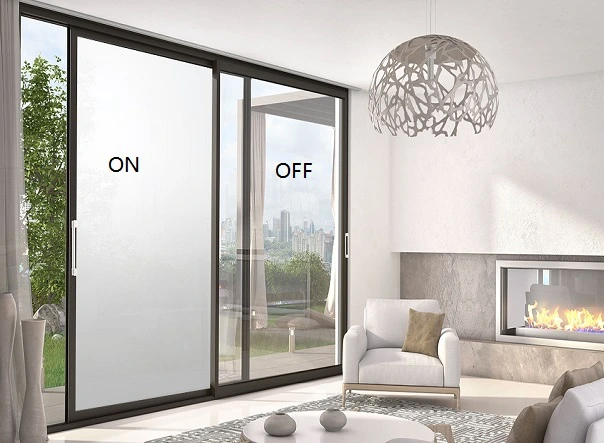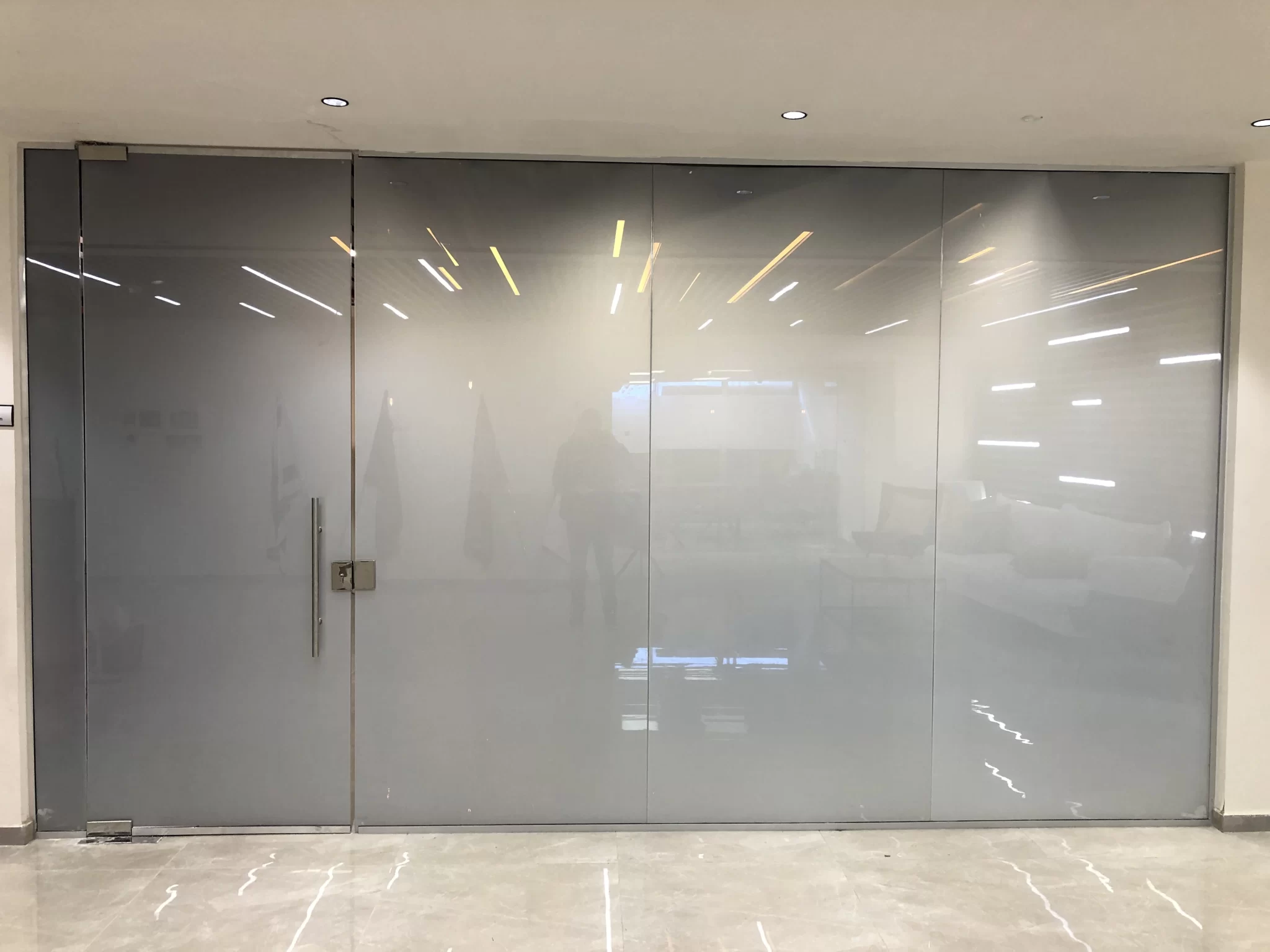PNLC Glass: The Reverse of Smart Glass Technology
PNLC (Polymer Network Liquid Crystal Glass) is a next-generation innovative type of smart glass, often referred to as “Reverse PDLC” or “reverse smart glass,” that offers dynamic control over privacy and light. It operates in the opposite manner to traditional PDLC (Polymer Dispersed Liquid Crystal) glass. Unlike traditional switchable glass, PNLC offers faster switching, higher clarity, and enhanced performance—all with lower power consumption.
How does PNLC work?
At its core, PNLC glass uses a thin film of liquid crystals dispersed within a polymer network between two conductive layers of glass or film. The key to its “reverse” functionality lies in the arrangement of these liquid crystal molecules:
- When power is OFF: unlike PDLC, in PNLC glass, the liquid crystal molecules are naturally aligned, allowing light to pass through. This means that PNLC glass is transparent by default when no electricity is applied.
- When power is ON: when electric current is applied, the liquid crystal molecules scatter, causing the glass to turn opaque.


Why choose PNLC glass?
PNLC glass offers better transparency when powered on than traditional PDLC glass and transitions from clear to opaque in milliseconds, consuming minimal power, especially in opaque mode easily integrated with building automation and smart home systems. Provides both default transparency and on-demand privacy. Its unique functionality makes it suitable for a wide range of settings, including automotive, conference rooms, luxury interiors, and rear projection screens.
PNLC glass key features
- It changes from transparent to opaque, giving dynamic privacy control.
- Protects interiors from harmful radiation and helps with temperature control.
- Operates in low voltage.
- Maintenance-free and easy to clean.

FAQs
How is PNLC film different from PDLC switchable film?
The primary difference between PNLC (Polymer Network Liquid Crystal) and PDLC (Polymer Dispersed Liquid Crustal ) lies in their default state and operational mode. PDLC is opaque when power is off, whereas PDLC is transparent in its default state.
PDLC is commonly used for privacy needs where the opaque state is desired when power is off (e.g., conference rooms, bathrooms). Meanwhile, PNLC is ideal for situations where transparent state is preferred by default, such as automotive applications.
PNLC generally offers superior clarity and less haze in its transparent state compared to PDLC.
Is PNLC film more energy-efficient than PDLC?
Yes. PNLC is more energy efficient than PDLC, especially during prolonged use. Although both technologies consume very little energy, PNLC can operate at lower voltages, which makes it more energy efficient, especially for large-scale or high-traffic installations.
Can PNLC film be combined with tinted or decorative glass?
Absolutely. Layering of PNLC film with decorative glass can offer privacy control and sun-shading along with enhanced aesthetics.
